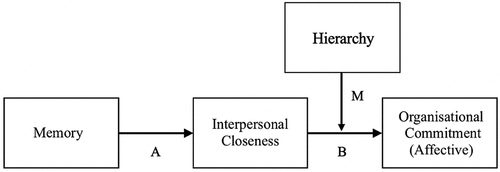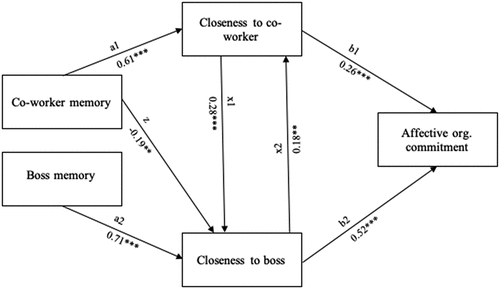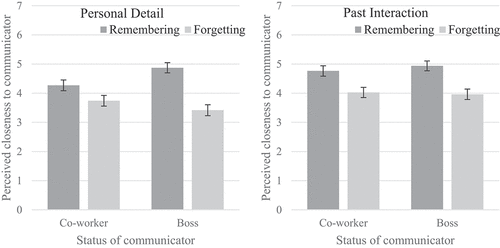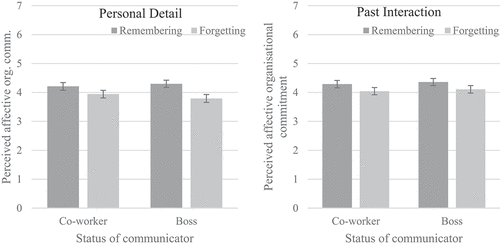Figures & data
Figure 1. Proposed organizational model of effect of memory on organizational commitment. Memory impacts organizational commitment indirectly through interpersonal closeness. The influence of interpersonal closeness on organizational commitment is more extreme when the involved relationship is with a higher status colleague (e.g., one’s boss).

Table 1. Sample characteristics for Study 1a and 1b.
Figure 2. Our final structural equations model. Paths a1 and a2 show perceived levels of coworker and boss memory predicting closeness to coworkers and bosses respectively. Paths b1 and b2 show closeness to coworkers and bosses in turn predict affective organizational commitment. The joint effect of the a paths and the b paths capture the indirect influence of perceived memory on affective organizational commitment through interpersonal closeness. Paths x1 and x2 allow for possible interdependence between boss and coworker closeness. Path z was a data driven addition to improve model fit.

Figure 3. Mean perceived interpersonal closeness scores across all conditions (error bars represent ±1 standard error). Results showed that perceived closeness was higher when an interaction was remembered vs. forgotten and when past interactions vs. personal details were discussed. Boss memory for personal details led to more perceived closeness than coworker memory for personal details, with no such difference in either forgetting or previous conversation conditions.

Figure 4. Mean perceived affective organizational commitment scores across all conditions (error bars represent ±1 standard error). Results showed that perceived affective organizational commitment was higher when an interaction was remembered vs. forgotten and when past interactions vs. personal details were discussed. No effect of status or interactions with status were observed.

Figure 5. The total, direct, and indirect effects of memory condition on affective organizational commitment through interpersonal closeness in Study 2. Unstandardized slopes are presented with total effect in squared parentheses. Indirect effect of memory on affective commitment: b = 0.28 (LL = 0.20, UL = 0.56). Perceived closeness to communicator fully mediated the effect of memory on affective organizational commitment.

Data availability statement
The materials and data reported here are available for access at https://osf.io/9ru3b.


